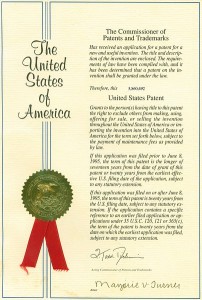 Design patents protect the visual ornamentation or embodied in an article of manufacture (e.g. a product). In other words, a design patent protects the way a product looks. This is in contrast to a utility patent that protects a process or the way a product functions or operates.
Design patents protect the visual ornamentation or embodied in an article of manufacture (e.g. a product). In other words, a design patent protects the way a product looks. This is in contrast to a utility patent that protects a process or the way a product functions or operates.
The Ordinary Observer
The protection afforded by a design patent is quite narrow as compared to that provided by a utility patent. Design patents are effective at preventing direct knockoffs. Courts have set out an ordinary observer test for determining whether a design patent covered a product, e.g. whether the product infringed the design patent. The court will consider whether the product and the design shown in the drawings of the design patent are substantially the same in the view of the ordinary observer.
What do your customers care about?
If customers would be satisfied with a competitor’s product that has an appearance that is not substantially the same as your product, then a design patent may not provide a large competitive advantage. However, design patents are particularly useful for product the visual appearance of products where the appearance an important factor in the purchasing decision of a customer.
Protecting Unique Portions of Product
Design patents can be drafted to cover not just the entire visual appearance of a product, but also a portion of the visual appearance of a product. In this way, the most unique portion of the product can be protected regardless of the more usual or unimportant portions of the product.
Protecting an Invention with Design and Utility Patent Protection
When concerning whether to seek a design patent or a utility patent, it is important to consider whether you would like to stop competitors from copying the visual appearance of your product (design patent protection) or the functional features of your product (utility patent protection). You might decide that you want to prevent competitors from copying the visual appearance and the functional features of your product, in which case you would file a design patent application and a utility patent application on your product.
Summary
A design patent (1) is relatively inexpensive compared to a utility patent, (2) protects the visual appearance of a product or a portion of a product, (3) is effective for preventing or stopping direct copying of the visual appearance of the product, (4) has a 14 year term, and (5) does not require the payment of maintenance fees after the design patent is granted.
